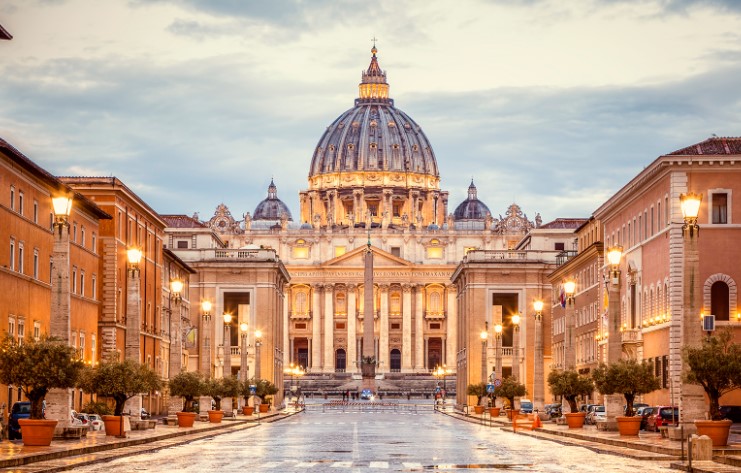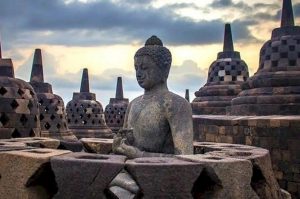Journey of Faith: Pilgrimage to Italy for the 2025 Pilgrims of Hope Jubilee

Embarking on a pilgrimage to Italy for the 2025 Pilgrims of Hope Jubilee is not just a trip; it’s an enriching journey of faith, discovery, and spiritual renewal. Whether you are a seasoned traveler or a first-time pilgrim, this comprehensive travel plan will help you navigate the spiritual and cultural wonders of Italy, ensuring a meaningful and memorable experience.
Pre-Trip Preparation
Before setting foot on Italian soil, it’s essential to ensure all your travel documents are in order. Make sure your passport is valid well beyond your stay. Secure the necessary visa to enter Italy, as requirements may vary based on your nationality.
Purchasing comprehensive travel insurance is highly recommended. It should cover health matters, cancellations, and any specific needs related to your pilgrimage. This precaution ensures you’re prepared for any unforeseen circumstances that may arise during your journey.
Health and safety are paramount, so keep yourself updated by checking the World Health Organisation website for any health-related advisories. This will help you remain informed about necessary vaccinations, health tips, and other important information to maintain your well-being throughout the trip.
Immersing in Italy’s Sacred Sites
Your pilgrimage begins in the heart of Catholicism—Rome. Start with visits to St. Peter’s Basilica, a masterpiece of Renaissance architecture and one of the holiest sites in Christendom. The Vatican Museums, home to an unparalleled collection of art and history, culminate in the awe-inspiring Sistine Chapel, where Michelangelo’s frescoes depict scenes from the Bible.
Walking through the Holy Door at St. Peter’s Basilica, which is opened only during Jubilee years, offers a profound spiritual experience, symbolizing the passage from sin to grace.
Next, the journey takes you to Assisi, the serene town that cradles the legacy of St. Francis, the patron saint of animals and the environment. Here, the Basilica of St. Francis houses the saint’s tomb and is adorned with frescoes by Giotto that narrate his life. Visit the Basilica of Santa Chiara, dedicated to St. Clare, a follower of St. Francis and founder of the Order of Poor Ladies (now known as the Poor Clares). The peaceful Eremo delle Carceri, a hermitage nestled in the hills above Assisi, provides a perfect retreat for meditation and contemplation.
Florence, renowned for its rich religious art and architecture, is your next destination. Visit the Cathedral of Santa Maria del Fiore, with its iconic dome designed by Brunelleschi. Explore the Basilica of San Lorenzo, resting place of the Medici family, and the Convent of San Marco, which houses works by Fra Angelico, a Dominican friar renowned for his religious paintings.
Alongside these primary cities, your itinerary includes other significant pilgrimage sites. The Sanctuary of Loreto is home to the Holy House, believed to be the residence of the Virgin Mary in Nazareth. Milan’s majestic Duomo, a Gothic masterpiece, offers breathtaking views from its rooftop. The Shrine of Padre Pio in San Giovanni Rotondo draws millions of pilgrims each year to venerate the beloved Capuchin friar known for his piety and miracles.
Accommodation and Transportation
Italy offers a range of accommodation options tailored for pilgrims. From welcoming pilgrim hostels and religious guest houses to budget-friendly hotels, there is something to suit every preference and budget. Staying near major pilgrimage sites ensures convenience and comfort throughout your journey.
For international travelers, flying into Rome Fiumicino or Milan Malpensa airports is most convenient. Italy’s efficient train services, such as Trenitalia and Italo, make traveling between cities seamless and enjoyable. High-speed trains connect major cities, allowing you to traverse the country quickly and comfortably. Within each city, local transportation options like buses, metros, and taxis are readily available to get you to your destinations efficiently.
Daily Itinerary Highlights
Upon arrival in Rome, take the first couple of days to settle in and visit key religious landmarks, setting a reflective tone for your pilgrimage. Spend time at the Vatican City, attending a Papal Audience if possible, which is held on Wednesdays, offering a unique opportunity to see the Pope and receive his blessing.
Over the next few days, immerse yourself in the rich history and spirituality of Rome. Visit the Roman Forum and the Colosseum to understand the ancient context within which early Christianity spread. Explore lesser-known but equally inspiring churches such as the Basilica of San Clemente, which reveals layers of history beneath its floors, and the Basilica of St. John Lateran, the cathedral of the Bishop of Rome.
Traveling to Assisi for two days allows you to follow in the footsteps of St. Francis, visiting his Basilica and other revered sites like the Porziuncola inside the Basilica of Santa Maria degli Angeli. The peaceful surroundings of Assisi offer ample opportunities for prayer and reflection amidst its stunning natural beauty.
Moving on to Florence, spend the next two days discovering its rich religious history and art. In addition to the main cathedrals, explore the Basilica of Santa Croce, where many illustrious Italians, including Michelangelo and Galileo, are buried. Don’t miss the Uffizi Gallery, which houses an exceptional collection of Renaissance art, including works by Botticelli and Leonardo da Vinci.
Devote another two days to visiting other significant pilgrimage sites, such as the Sanctuary of Loreto, where you can participate in Mass and other devotional activities, or the Shrine of Padre Pio, where you can view his relics and learn about his life and miracles. Engage in deep spiritual practices that allow you to connect with the saints and their enduring legacies.
Finally, return to Rome for the last leg of your journey. Spend these days reflecting on your pilgrimage, visiting any remaining sites, and participating in final acts of devotion before your departure. Use this time to absorb and internalize the spiritual insights gained during your travels.
Engaging in Cultural and Spiritual Activities
The Jubilee is an opportunity to participate in official events and ceremonies, enriching your pilgrimage experience. Check the Vatican’s official schedule for Jubilee events and plan to attend special Masses, processions, and other liturgical celebrations.
Allocate time for personal spiritual practices such as prayer, reflection, confession, and attending Mass to nourish your spirit. Many churches and pilgrimage sites offer quiet spaces for contemplation and opportunities for confession, helping you deepen your connection with the divine.
Cultural immersion is equally important. Savor Italian cuisine, experiencing regional specialties from pasta and pizza to gelato and espresso. Engage in local traditions and customs, such as evening passeggiata (strolls) through historic squares and markets. This not only enriches your travel experience but also provides a holistic understanding of the places you visit.
Budgeting and Packing Essentials
Plan your budget carefully, accounting for flights, accommodations, daily meals, entrance fees, and donations at pilgrimage sites. Implement cost-saving strategies such as booking group tours, using public transportation, and dining at local trattorias to manage expenses efficiently.
When packing, prioritize essentials like comfortable walking shoes, as you’ll be covering significant ground each day. Modest clothing suitable for religious sites is crucial, as many churches have dress codes that require covered shoulders and knees. Ensure you have all necessary travel documents, including copies for safety. Bringing personal devotional items and journals can enhance your reflective practices during the pilgrimage, providing a tangible record of your spiritual journey.
Post-Trip Reflection
Upon returning home, share your pilgrimage experiences with your community and parish, enriching their understanding and faith. Consider hosting a presentation or writing an article for your church bulletin to inspire others. The connections you make during your pilgrimage can lead to lifelong friendships and support networks, fostering a sense of shared spiritual growth.
Continue the spiritual practices you embraced during your journey. Regular prayer, attending Mass, and reading spiritual literature can help maintain the depth of your newly strengthened faith. Stay connected with fellow pilgrims through social media groups or periodic meetups to share ongoing spiritual insights and support each other in your faith journeys.
In conclusion, the 2025 Pilgrims of Hope Jubilee offers a unique opportunity to deepen your faith while exploring the sacred and historical treasures of Italy. With careful planning, an open heart, and a spirit of reverence, your pilgrimage will be a transformative journey of hope and renewal, leaving you enriched both spiritually and culturally.






